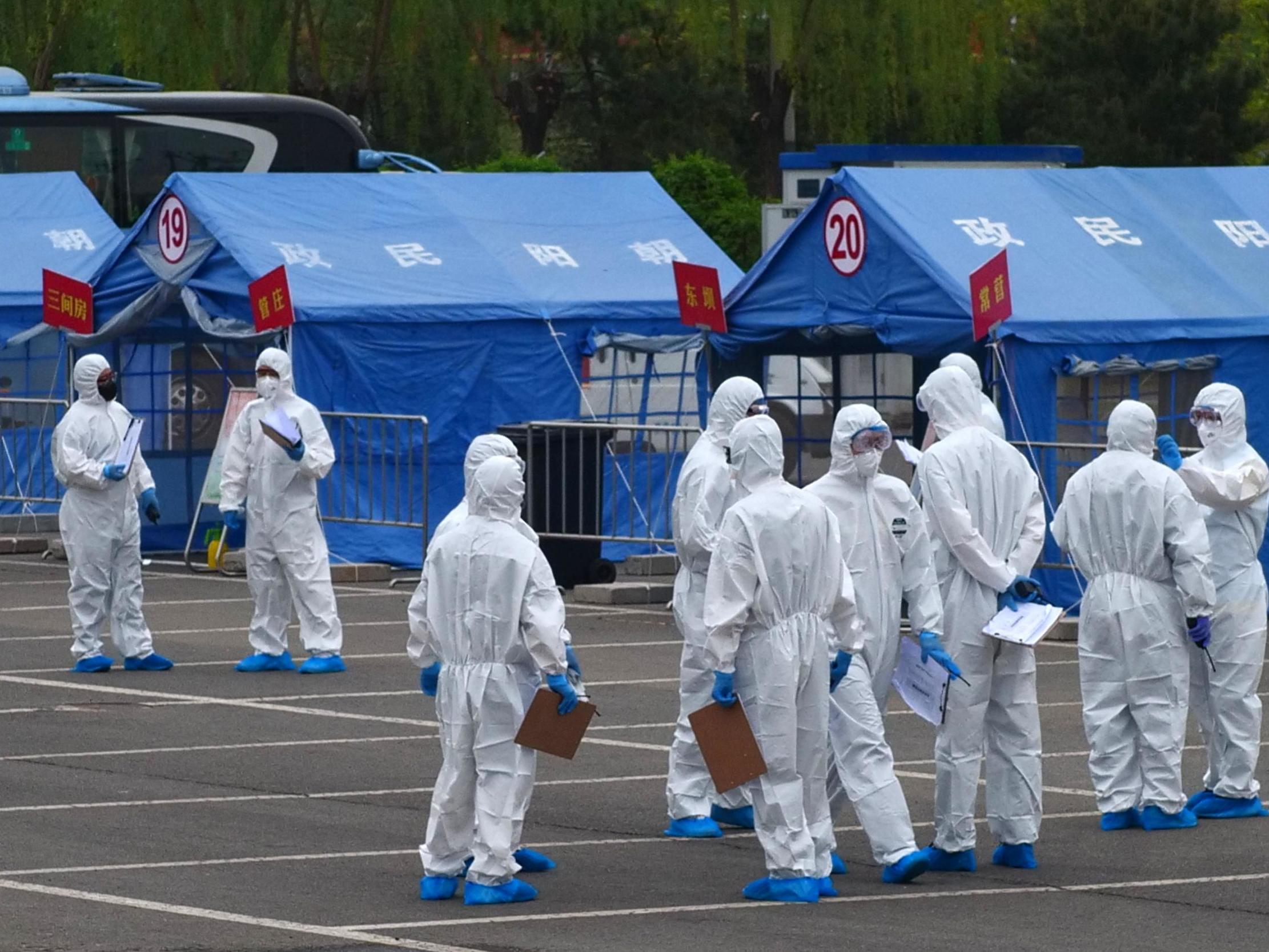

Scientists have raised contemporary questions over whether or not a coronavirus pattern held for years in a Wuhan laboratory may have mutated naturally or by way of genetic experimentation to develop into the virus which causes Covid-19.
For the reason that Sars pandemic in 2003, China-based researchers have been scouring bat-inhabited caves within the hope of monitoring and analysing potential new coronaviruses, notably on the Wuhan Institute of Virology (WIV).
Among the many most revered of those scientists is Dr Shi Zhengli, nicknamed “Bat Lady” by her colleagues – who in February co-authored essentially the most intensive educational paper on the novel coronavirus as much as that time.
Obtain the brand new Impartial Premium app
Sharing the complete story, not simply the headlines
Along with giving a full genetic description of the virus, Dr Shi’s paper – printed in Nature – revealed that the WIV housed a pattern of virus collected from bats named RaTG13, which it stated was a 96.2 per cent match with the Covid-19 virus – the closest but found.
The scientific consensus has been that the 2 viruses are unlikely to be the identical, with some estimates suggesting it may take between 20 and 50 years to make up the four per cent genetic distinction.
Nonetheless, previous analysis work carried out at VIW to enhance the flexibility of pathogens to trigger illness, often called “gain-of-function” analysis, has been documented in papers printed between 2015 and 2017, described in a single paper co-authored by Dr Shi as “virus infectivity experiments”.
Whereas scientists additionally overwhelmingly imagine the genetic code of Sars-Cov-2 suggests it has mutated naturally, and has not been engineered, others imagine it shouldn't be dominated out that the 2 viruses might as soon as have been the identical.
The kind of methods required to show RaTG13 into Sars-Cov-2 are “similar” to work beforehand carried out in Wuhan, alleges Professor Richard Ebright of Rutgers College’s Waksman Institute of Microbiology in New Jersey.
“The exact same methods, the exact same experimental methods utilizing RaTG13 as the start line, would yield a virus basically similar to Sars-Cov-2,” he instructed The Sunday Occasions.
Nonetheless, Professor Martin Hibberd of the London Faculty of Hygiene & Tropical Medication contended that to take action can be “exceptionally tough”, telling the paper that they “should not the identical virus and I don’t suppose you'll be able to simply manipulate one into the opposite”.
The pair additionally disagreed over how lengthy the required mutation would take naturally.
Professor Hibberd recommended it may take round 20 years to take action, however Professor Ebright stated it was “not a legitimate assumption” to imagine that the virus would have developed on the price noticed since its emergence this 12 months.
“When a virus adjustments hosts and adapts to a brand new host the speed of evolutionary change is far larger,” Professor Ebright stated.
“And so it's doable that RaTG13, significantly if it entered people previous to November 2019, might have undergone adaptation in people at a price that will permit it to provide rise to Sars-Cov-2. I feel that could be a distinct risk.”
The origins of the RaTG13 pattern held have additionally been positioned beneath additional scrutiny, with one among Dr Shi's longstanding colleagues alleging that it was present in 2013 in a Chinese language copper mine linked to the deaths of three males tasked with clearing bat faeces.
Whereas the reason for their deaths was linked to fungus discovered within the cave, exams carried out on 4 of the lads discovered all of them had antibodies towards an unknown Sars-like coronavirus.
In 2012, Dr Shi and her crew had been reportedly referred to as to the copper mine close to Tongguan within the Mojiang area after six males fell unwell with pneumonia-like signs.
In a paper referred to as “Coexistence of a number of coronaviruses in a number of bat colonies in an deserted mineshaft” printed in 2016, she and her colleagues wrote that of the 152 genetic sequences of coronavirus discovered within the mine, two had been much like that which had brought about Sars. One was reportedly described as a “new pressure” of Sars and referred to as RaBtCoV/4991.
In claims backed up by a virus database printed by the Chinese language Academy of Sciences, Peter Daszak, president of EcoHealth Alliance, who has looked for viruses with Dr Shi’s crew for 15 years instructed The Sunday Occasions that the pattern discovered within the mine, RaBtCoV/4991, had been renamed RaTG13, including: “It was simply one of many 16,000 bats we sampled.
“It was a faecal pattern, we put it in a tube, put it in liquid nitrogen, took it again to the lab. We sequenced a brief fragment.”
Referencing the pattern's change of title since its discovery in 2013, he stated: “The conspiracy of us are saying there’s one thing suspicious concerning the change in title, however the world has modified in six years — the coding system has modified.”
Whereas it's reported that what's believed to be the closest-known relation to the novel coronavirus was shelved within the Wuhan institute at that time as not being an in depth sufficient match to the Sars virus, scientists have questioned the chance of this situation.
“For those who actually thought you had a novel virus that had brought about an outbreak that killed people then there's nothing you wouldn’t do — on condition that was their entire cause for being [there] — to unravel that, even when that meant exhausting the pattern after which going again to get extra,” Nikolai Petrovsky of Flinders College in Adelaide instructed The Occasions.

0 comments:
Post a Comment